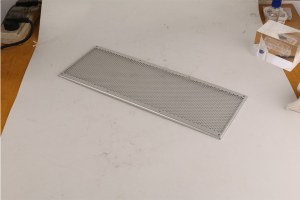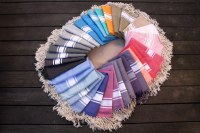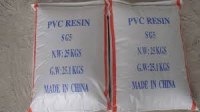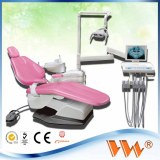Cutting seam: the slit of the laser cutting aluminum plate is generally 0.1mm-0.2mm
Cutting surface: the cutting surface of the laser-cut aluminum plate has no burrs and no dross.
Small thermal deformation: laser processing laser slits are fine, fast, energy concentrated, so the heat transferred to the material being cut is small, causing the deformation of the material is also very small.
Advantages of Laser Cutting Sheet Metal Panels
The cutting seam is fine: the slit of the aluminum laser cut panels is generally 0.1mm-0.2mm
The cutting surface is smooth: the cutting surface of the custom laser cut aluminum panels has no burrs and no dross.
Small thermal deformation: laser processing laser slits are fine, fast, energy concentrated, so the heat transferred to the material being cut is small, causing the deformation of the material is also very small.
Saving materials: laser processing using computer programming, laser equipment can be used to cut the material of different shapes of aluminum sheet processing parts, improve the material utilization of aluminum sheet, save a lot of material costs.
Can cut more thick aluminum plate mainly depends on the power of the laser generator, generally 6000W the thickest can cut to 16mm, 4500W can cut to 12mm.
Customized Service for Laser Cutting Perforated Sheet Metal Panels
Our product is also customized by customers, this is a heat sink cover sheet metal. The original drawings are provided by the customer in 3d or 2d drawings. We program on the computer, laser cutting. Accuracy: ±0.05, all sizes meet customer requirements, we cut the first piece we will check the size, burr size; adjust the laser cutting parameters, so that the cut products are precise and burr-free. The length and width of the sheet can also be customized within 3m. This product uses the standard board: 2440mmx1220mm. Anodizing of aluminum and aluminum alloys Anodizing of aluminum and aluminum alloys.
What is anodizing?
In an appropriate electrolyte, a method in which an oxide film is formed on the surface of a metal by using electric current as an anode. By controlling the reaction conditions (different types, different concentrations of electrolyte, process conditions for controlling oxidation), anodized films of different properties and thicknesses can be obtained. In sulfuric acid, chromic acid, oxalic acid electrolyte, the natural oxide film thickness of aluminum Can be from 0.01um---0.015um. Anodizing of aluminum and aluminum alloys
Properties of anodized films of aluminum and aluminum alloys
(1) The porosity of oxide film structure, honeycomb structure, the porosity of film formation and dissolution ability of electrolyte and growth of film formation Speed depends on the type of electrolyte and the process conditions of oxidation. For example, an oxide film formed in a sulfuric acid solution has about 800 pores per square micrometer (pore diameter: 0.015 um, porosity: 13.4%). The oxide film formed in the oxalic acid solution is about 60 pores per square micrometer. The pore size is 0.025um and the porosity is 8%) so we can choose different types of electrolytes according to the different requirements of the oxide film. The porosity of the oxide film makes the film layer have a good adsorption capacity and can be used as a bottom layer of the coating layer, and the oxide film can also be dyed into various colors to improve the decorative effect of the metal. Anodic oxidation of aluminum and aluminum alloys
(2) Abrasion resistance of oxide film, hardness of pure alumina is very high, HV=1960, hardness of ordinary anodized aluminum oxide film is about 196-490HV, (because oxide film has pores, so the hardness is much lower), using the hard anodizing process, the hardness of the oxide film can reach 1176-1470HV, because the hardness is high, the wear resistance of the oxide film is very good, if the film adsorbs the lubricant, it can be further improved Its wear resistance.
(3) The corrosion resistance of the oxide film, the aluminum oxide film is stable in air and soil, and the bonding force with the substrate is also strong. In order to improve the corrosion resistance, the film layer after anodization is subjected to sealing and spraying treatment. Aluminizing of aluminum and aluminum alloys
(4) Insulation of oxide film, high impedance of aluminum anodized film, low thermal conductivity, stability up to 1500 degrees, thermal conductivity 0.419W/(m?K) —1.26 W/(m?K). Therefore, the dielectric layer of the electrolytic capacitor or the insulating layer of the electrical product.
(5) The bonding force of the oxide film, the bonding strength of the oxide film to the base metal is very strong, and it is difficult to separate them by mechanical means. Even if the film layer is bent with the metal, the film layer remains well bonded to the base metal, but The oxide film has small plasticity and high brittleness. When the film layer is subjected to large impact load and bending deformation, cracks may occur, so the oxide film is not easily used under mechanical action and can be used as a bottom layer of the paint layer. Anodizing of aluminum and aluminum alloys.
3. The formation mechanism of the anodized film. The anodizing of aluminum and aluminum alloy is to use aluminum or aluminum alloy as anode and lead as an anode inappropriate electrolyte. The process of generating an oxide film under the action of an applied current, the electrolyte is generally an acidic solution of moderate solubility. Anode reaction: H2O – 2e → O +2H+ 3Al + 3O → Al2 O3 Cathodic reaction: 2H+ + 2e → H 2 ↑
As a professional custom metal manufacturing company and perforated sheet metal factory, we provide china custom sheet metal, custom aluminum sheet metal, perforated aluminium sheet cut to size, etc. Want to know more? Please contact us.
Location : 1/F ,3 No ,The sixth Industrial Zone, Mashantou, Gongming Subdistrict, Guangming New District, Shenzhen, China, 518106 Shenzhen,
Contact : Ruan Tina, 86 755 27108658








